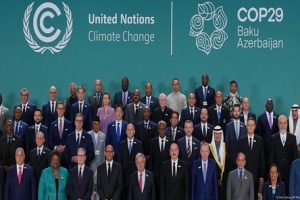
Africa aims to utilize its natural resources to drive economic growth and social advancement. Through appropriate policies, investments, and technological advancements, Africa can unlock its mining potential, generating employment, attracting foreign direct investment, and fostering industrialization that benefits local communities and the global economy alike.
Africa is home to around 30% of the world’s mineral reserves, which are now in high demand due to the global shift towards de-carbonization. The energy transition necessitates increased exploration and exploitation of critical minerals found in Africa, such as cobalt, lithium, gold, potash, and tantalum. Nations like the Democratic Republic of the Congo, Zimbabwe, and Ethiopia possess abundant “green minerals” crucial for technologies like solar panels, battery storage, and wind turbines.
Ethiopia boasts a rich history of mining dating back thousands of years. With a diverse geology offering a variety of minerals like gold, platinum, tantalum, potash, iron ore, copper, and gemstones, coupled with a burgeoning economy and educated populace, Ethiopia’s mining sector is poised to play a pivotal role in Africa’s industrial development.
Despite Africa’s mineral wealth, it has often failed to translate into tangible benefits for its people. The African Mines Development Center (AMDC), established to assist African nations in better leveraging their mineral resources and avoiding the “resource curse,” calls for more countries to ratify its founding statutes.
Reports from the AMDC indicate that only 4 out of the 15 required country ratifications have been achieved thus far. Ethiopia, a significant mineral producer, has yet to ratify the AMDC statutes.
According to Million Mathwos, the Minister of State for Mines, many African countries are collaborating closely with the center, and Ethiopia is also interested in joining the AMDC. He mentioned that various concerns raised by the center are being addressed in collaboration. Efforts are underway to approve the center’s initiatives to safeguard the interests of participating countries, although only a few nations have fully committed thus far.
The AMDC has developed frameworks like the African Mining Vision and the African Green Minerals Strategy to assist countries in formulating appropriate policies, regulations, and negotiation skills when dealing with multinational mining companies. Importantly, the AMDC is working to enhance local technical and technological capabilities so African nations can move beyond raw material exports and up the value chain.
While the demand for critical minerals is soaring globally, the AMDC recognizes that many African countries are not yet fully prepared. The center’s role is to provide the necessary guidance and support to ensure Africa is equipped to meet the growing demand responsibly and equitably, transforming mineral wealth into sustainable development for its people.
Ethiopia’s relatively recent entry into the mineral extraction sector presents a unique opportunity, as its minerals were less exploited during the colonial era compared to other African nations. This positions Ethiopia well to develop its mineral resources and thrive in the industry in the future, noted the Minister of State.
He emphasized the importance of Ethiopia’s mineral resource development in transitioning away from carbon-emitting economic activities. By focusing on mineral extraction for clean energy technologies, Ethiopia can enter the green industrial sector and establish a more sustainable economic future.
Africa, as a continent, is significantly contributing to global carbon emissions reduction by supplying essential mineral resources like copper, nickel, cobalt, and lithium crucial for renewable energy and electric vehicle technologies. Africa, through its mineral wealth, is poised to play a leading role in the global de-carbonization effort.
The private sector is actively engaged in supporting this green transformation, with top investors worldwide participating. Factories have been established in various Ethiopian regions like Benshangul, Tigray, Gambella, and Oromia to leverage the country’s mineral resources, including gold and potash deposits linked to geothermal energy.
A survey conducted in the Ogaden region confirmed the presence of 21 billion, 336 million cubic meters of natural gas, revealed the Minister. He also mentioned oil and natural gas deposits in six different Ethiopian locations, expressing optimism that further exploration could uncover more reserves.
The Minister stated that efforts are being made to bring the newly discovered natural gas into production by next year. While some exploration projects can take years, they are confident in achieving success in a shorter timeframe.
The government is providing various forms of support and monitoring to ensure the effectiveness of ongoing exploration and development efforts. Given the mining sector’s importance in Ethiopia’s economic development, the government is dedicated to maximizing Ethiopia’s natural resources’ potential.
Apart from the natural gas discovery, Ethiopia is focusing on developing its geothermal energy sector. The government, in collaboration with states and the private sector, is working on major geothermal projects to enhance the country’s energy supply and create job opportunities.
The recent natural gas discovery in the Ogaden region underscores Ethiopia’s rich natural resources and the government’s commitment to leveraging them for economic growth and energy security.
Ethiopia’s mining sector has the potential to drive economic growth and support the country’s transition to a greener economy. By responsibly developing its mining resources, creating jobs, attracting foreign direct investment, and fueling industrialization, Ethiopia can position itself as a key player in Africa’s green industrial revolution.
BY FIKADU BELAY
THE ETHIOPIAN HERALD WEDNESDAY 19 JUNE 2024





